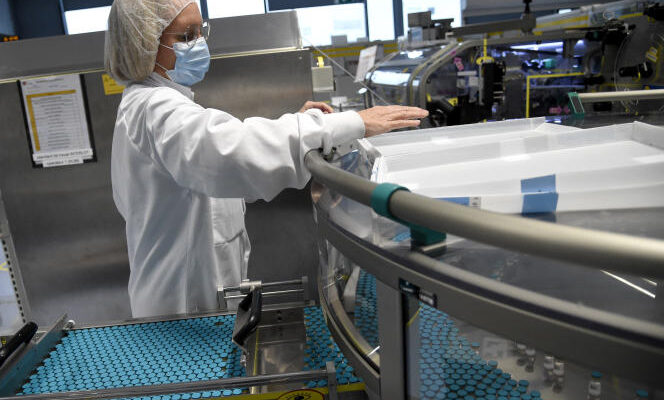“ Do you want to pursue a career in a biopharmaceutical company? We are recruiting here. » At the edge of the departmental road which leads to the GSK factory in Saint-Amand-les-Eaux (North), the huge sign does not go unnoticed. “ It’s effective. We have had several dozen people who have spontaneously presented themselves since its installation”rejoices Eric Platteau, director of communication and public affairs of the site.
Since the opening of its facilities in 2011, the British pharmaceutical laboratory’s vaccine factory, planted on a vast plot of 17 hectares on the edge of a state forest, has grown considerably. Its buildings now cover 90,000 square meters, 18,000 of which are devoted to production tools.
“ Our site continues to develop at a sustained pace. We continue to increase production volumes each year and expand the number of markets we serve. »welcomes Eric Moreau, the director of the site, who plans to increase his workforce by 10% (1,000 employees today) over the next few months.
Over the past decade, the factory, which produced more than 131 million doses in 2022 (95% of which was sent for export), has become one of Big Pharma’s nerve centers for its global vaccine manufacturing. It is responsible for the formulation, filling and packaging stages.
Public adherence to vaccination
This Friday morning in April, in the building dedicated to the canning of products, thousands of small vials of Boostrix – an injection aimed at protecting against diphtheria, tetanus, whooping cough and poliomyelitis – parade at full speed on the machines, under the watchful eye of two operators. They were previously filled with the vaccine under an isolator installed in an adjacent building, after receiving the “antigenic soup” (which contains the active ingredients) shipped by the factory in Wavre, Belgium. In a few seconds, they are labeled one by one, then coated with a notice before being placed in their final packaging box.
Nearly 20% of the vaccines distributed each year by GSK leave the walls of the northern factory, including Shingrix, the laboratory’s star product, intended to prevent shingles, or Mosquirix, the first vaccine marketed in the world against malaria. “We produce a total of fifteen different vaccines, in presentations in the form of vials, syringes or in freeze-dried version. »explains Mr. Moreau.
You have 55.58% of this article left to read. The following is for subscribers only.
